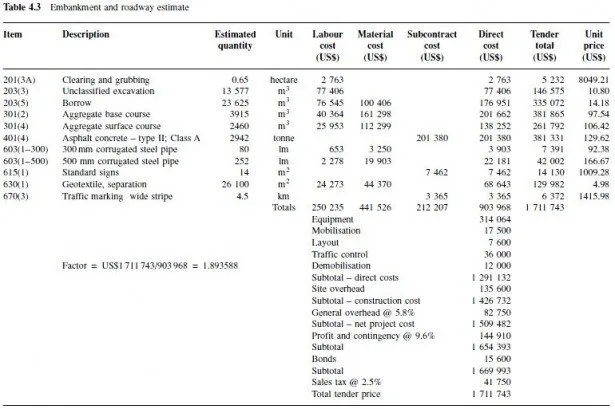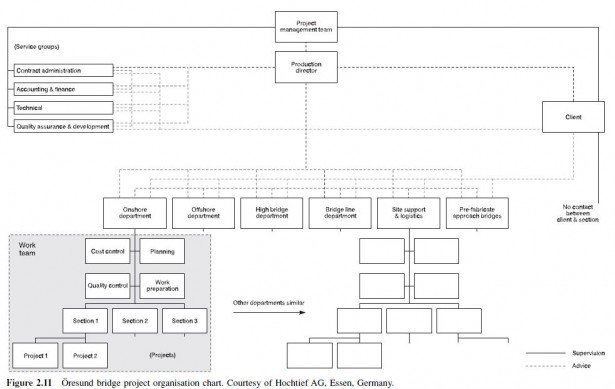Perhaps the simplest type of contract is the one under which the contractor is paid a pre-agreed fixed amount for the project, based on a contract for a specified amount of in-place finished construction work. This amount is paid without regard for the actual costs experienced by the contractor. For such a contract, the project must be completely defined by the contract documents prior to receipt of proposals, selection of the contractor and formation of the contract. The price of the lump sum, or stipulated sum, contract must include all direct costs of labour, materials, equipment and subcontractors, as well as such indirect costs as field supervision, field office, equipment maintenance and the like, plus general company overhead, plus profit. The contractor in essence guarantees the completed project for the stipulated price.
This type of contract is suitable for such projects as buildings, which can be completely designed and whose quantities are thus definable, at the beginning of the project. For a project involving large quantities of earthwork, it is unlikely that those quantities can be accurately predicted in advance and thus another type of contract would be more appropriate. Two advantages to the owner of lump-sum contracts are the fact that the total cost of the project is known before construction begins and the lack of a need to monitor and approve the contractors costs. On the other hand, the owner bears the risk of poor quality from a contractor trying to maximise profit within the fixed sum; other potential disadvantages to the owner include the high cost and long time required for contractors to prepare tenders; although such costs are borne by the contractor, ultimately they are built into the successful contractors total price. In addition, the flexibility of this contract form is limited; any variation from the original plans and specifications requires a change order, a process that can be time consuming and expensive and may even lead to contract disputes.
From the standpoint of the contractor, a fixed-price job has the potential for a satisfactory profit, if the project is well managed and costs are controlled; it is the contractor who wields this control. Also, the need for detailed cost records for the owners use does not exist; the contractor does not need to prove its costs in order to be paid. (The contractor will still need to keep cost records in order to compare actual performance against estimated costs, but these records are for the contractors use only.) Another potential advantage to the contractor is the prospect of profit from changes in the work after the contract is signed. However, a poorly managed or unlucky job can lead to problems, because payments are not adjusted if the contractor gets into difficulties. Also, each contractor must prepare a detailed cost estimate and prepare a tender, even though only one such tender will lead to a contract.
The term fixed price is often used synonymously with lump sum, but this may be somewhat of a misnomer, as the guaranteed fixed price may change during the projects lifetime. We shall deal later in some detail with the process involved in changing such a contract. Suffice it to say here that changes may occur because of two primary reasons: changes in the conditions at the site, such as differing soil conditions and changes in owner desires, ranging from minor cosmetic changes (wall coverings in a building, for example) to complete changes in scope. Unless the contract provides that the contractor is to cover the costs of such changes within the lump sum amount, a change order will likely lead to a change in the total contract price.

